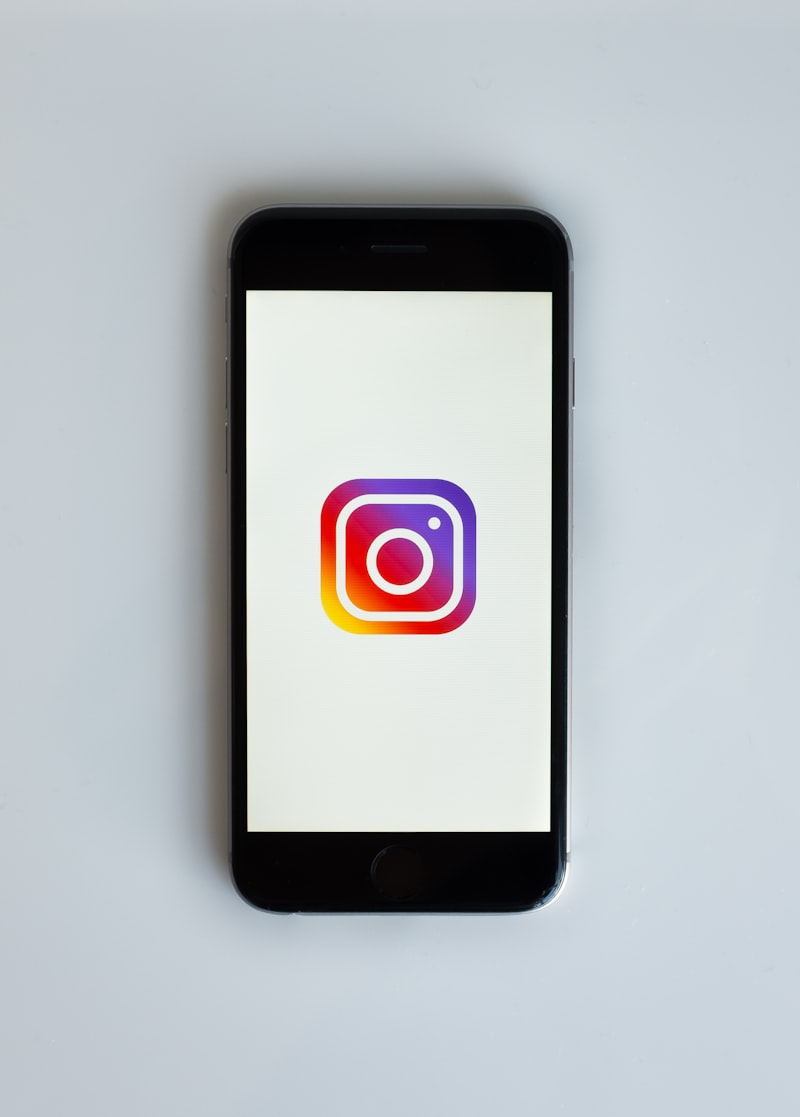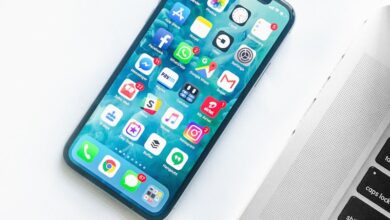Understanding Phone Formatting: A Beginner’s Guide

Are you a beginner in the world of smartphones and feel overwhelmed by the various technical terms and features? Don’t worry! In this beginner’s guide, we will demystify the concept of phone formatting and explain how it can enhance your smartphone experience. So, let’s dive right in!
Phone formatting refers to the process of resetting your smartphone to its original factory settings. It erases all the data, apps, and settings on your device, giving it a fresh start. Think of it as a reset button that wipes the slate clean, helping to resolve many common software issues.
But why would you need to format your phone? Well, over time, your device can accumulate temporary files, unnecessary applications, and other digital clutter that can slow it down or cause glitches. By formatting your phone, you can eliminate these unwanted elements and regain optimal performance.

To format your phone, follow these steps:
-
Back Up Your Data: Before formatting, make sure to back up any important data such as contacts, photos, and documents. You can use cloud storage or connect your phone to a computer to create a backup.
-
Access Settings: Go to the settings menu on your smartphone. The location may vary depending on the operating system (Android or iOS) and the device model you are using.
-
Find Reset Options: Look for the “Backup & Reset” or “System” section within the settings menu. Here, you will find different options related to formatting and resetting your phone.
-
Choose Factory Reset: Select the option that says “Factory Reset” or “Reset Phone.” This will initiate the formatting process.
-
Confirm Action: Your phone will display a warning message informing you that all data will be erased. Double-check that you have backed up everything important and then proceed to confirm the action.
-
Wait for the Process to Finish: Once you confirm, your phone will begin the formatting process. It may take a few minutes for the reset to complete, so be patient.
After formatting, your phone will reboot and present you with a fresh user interface. You can then set it up as if it were new, reinstall the apps you need, and restore your backed-up data.
Remember, phone formatting should be done sparingly and only when necessary. It is a powerful tool to troubleshoot software issues, but it erases all your data, so make sure to back up everything important beforehand.
Now that you understand phone formatting, you can take control of your smartphone’s performance and keep it running smoothly. Don’t let digital clutter slow you down – refresh your phone’s settings and enjoy a seamless mobile experience!
Unlocking the Mystery: Demystifying Phone Formatting for Beginners
Have you ever encountered a sluggish phone that freezes or crashes frequently? Are you tired of dealing with storage issues and cluttered files? The solution to these problems might lie in phone formatting. But wait, what is phone formatting? How does it work? Don’t worry, we’re here to unlock the mystery and demystify phone formatting for beginners.
Phone formatting is like giving your device a fresh start—a reset that erases all data and settings, bringing it back to its factory state. It’s similar to formatting a computer or reinstalling the operating system. Formatting can help resolve various issues, such as performance slowdowns, software glitches, and persistent bugs.
To format your phone, you’ll need to navigate through the settings menu. The exact steps might vary depending on your device’s make and model, but the general process remains similar. Remember to back up your important data before proceeding with formatting, as it will erase everything from your device.

Once you’ve backed up your data, head to the settings menu and look for the “Backup & Reset” option. Within this section, you’ll find the option to format your device. Before hitting the format button, ensure you have a full understanding of the consequences—formatting will wipe all data, including apps, photos, videos, and documents.
Upon initiating the formatting process, your phone will erase all data and restore the original settings. It’s like giving your device a fresh lease on life. After completion, your phone will feel snappier, free from clutter, and ready for a new beginning.
Remember, phone formatting should be considered as a last resort when troubleshooting issues that couldn’t be resolved through other means. It’s not a recommended action for routine maintenance. If you’re experiencing minor problems, there are alternative solutions like clearing cache, uninstalling unnecessary apps, or updating your software.
Phone formatting is a powerful tool to address persistent software issues and give your device a fresh start. However, it should be approached with caution due to its irreversible nature. Always remember to back up your data before proceeding, and consider seeking professional guidance if you’re unsure about the process.
So, are you ready to unlock the mystery of phone formatting? Take control of your device’s performance and bid farewell to those frustrating glitches—format your phone and embark on a smoother digital journey today!
Master Your Device: Essential Tips for Understanding Phone Formatting
Are you tired of dealing with a cluttered and sluggish phone? Do you frequently run out of storage space or experience slow performance? It’s time to take control and master your device by understanding phone formatting. In this article, we will dive into essential tips that will help you optimize your phone’s performance and make the most of its capabilities.
First and foremost, let’s clarify what phone formatting actually means. Formatting refers to the process of erasing all data on your device and restoring it to its original factory settings. While this may sound daunting, it is a crucial step in maintaining your phone’s health and efficiency.
One significant advantage of formatting your phone is the removal of unnecessary clutter. Over time, your device accumulates temporary files, cached data, and residual app leftovers. These can clog up your storage space and slow down your phone. By formatting, you can wipe the slate clean and reclaim valuable space, giving your phone room to breathe and perform at its best.
Another benefit of formatting is the opportunity to start fresh. Have you ever wondered why your phone seems to run smoothly when it’s brand new but gradually becomes sluggish over time? This is often due to the accumulation of unwanted software, bloatware, and outdated system files. Formatting allows you to reset everything and enjoy a clean, optimized operating system, just like when you first unboxed your phone.
Before you format your phone, it’s vital to back up your important data. Formatting will erase everything, so make sure you have copies of your photos, videos, contacts, and other valuable files stored securely, either on an external device or in the cloud. Once you’ve backed up your data, you can proceed with confidence, knowing that your information is safe.
Mastering phone formatting is a game-changer for optimizing your device’s performance. By wiping away unnecessary clutter and starting fresh, you can enjoy a smoother, faster, and more efficient phone experience. Remember to back up your data before formatting and revel in the satisfaction of owning a device that truly serves you. Take control of your phone today and unleash its full potential!
From Clutter to Clarity: How Phone Formatting Can Transform Your Device
Are you tired of dealing with a cluttered phone that slows you down and makes it difficult to find what you need? It’s time to embrace the power of phone formatting and experience the transformation from clutter to clarity. In this article, we will explore how phone formatting can revolutionize your device and streamline your digital life.
Imagine your phone as a room filled with piles of papers, scattered belongings, and tangled wires. It’s overwhelming and frustrating, right? The same applies to your phone’s software. Over time, unused apps, cached data, and residual files accumulate, clogging up your device’s memory and slowing its performance. This clutter not only affects your phone’s speed but also hampers your productivity and overall user experience.


Phone formatting is like giving your device a fresh start. It involves wiping out all the unnecessary data, settings, and apps, and restoring your phone to its factory settings. Just as decluttering your physical space brings a sense of calm and order, phone formatting clears away the digital debris, creating a clean slate for you to work with.
But what about your precious photos, important documents, and cherished memories? Don’t worry! Before formatting your phone, make sure to back up all your essential data to a cloud service or an external storage device. Once you’ve safeguarded your files, you can proceed with confidence, knowing that everything important is safe and sound.

Now, let’s talk about the benefits of phone formatting. Firstly, it significantly improves your device’s performance. By removing unnecessary data and apps, your phone’s processor can operate more efficiently, resulting in faster loading times, smoother multitasking, and reduced lagging.
Formatting your phone also enhances security. It erases any potential malware or viruses that might have infected your device, providing a fresh layer of protection. Additionally, formatting ensures that your personal information, such as passwords and account details, is securely wiped out, reducing the risk of data breaches or identity theft.
Phone formatting is a game-changer that can transform your device from a cluttered mess to a streamlined powerhouse. By decluttering your digital space, you’ll enjoy improved performance, enhanced security, and a more organized user experience. So, take the leap and embrace phone formatting. Your device will thank you!
Phone Formatting 101: A Comprehensive Guide for Novice Users
Introduction:
Are you a novice user struggling with your phone’s performance? Is your phone acting sluggish and unresponsive? It might be time to consider formatting your device. In this comprehensive guide, we will walk you through the process of phone formatting, helping you restore your device to its optimal state. Whether you’re using an Android or iOS device, we’ve got you covered. Let’s dive in!
Understanding Phone Formatting:
Phone formatting is the process of erasing all data on your device and restoring it to its original factory settings. This procedure can resolve various issues, such as slow performance, software glitches, or excessive storage usage. However, keep in mind that formatting will delete all your personal data, so it’s important to back up any valuable information beforehand.
Android Phone Formatting:
For Android users, the formatting process may vary slightly depending on the device model and version of the operating system. Generally, you can find the formatting option in the “Settings” menu under “Backup & Reset.” Tap on “Factory Data Reset” and follow the prompts to initiate the process. Once completed, your phone will be restored to its default settings.
IOS Phone Formatting:
If you own an iPhone, formatting your device is equally straightforward. Open the “Settings” app, go to “General,” and scroll down to find “Reset.” From there, select “Erase All Content and Settings.” You may need to enter your passcode and Apple ID password to proceed. Once done, your iPhone will undergo the formatting process.
Benefits of Phone Formatting:
Phone formatting offers several benefits, including improved performance and increased storage space. By removing unnecessary files and apps, you can free up memory and enhance overall speed and responsiveness. Additionally, formatting can resolve software-related issues, such as freezes, crashes, and erratic behavior, providing you with a smoother user experience.
Conclusion:
Phone formatting can be a powerful solution for novice users facing performance issues on their devices. Whether you’re an Android or iOS user, following the simple steps outlined in this comprehensive guide will help you restore your phone to its optimal state. Just remember, backing up your data before formatting is crucial to prevent any data loss. Give it a try and enjoy a faster and more reliable smartphone experience!




